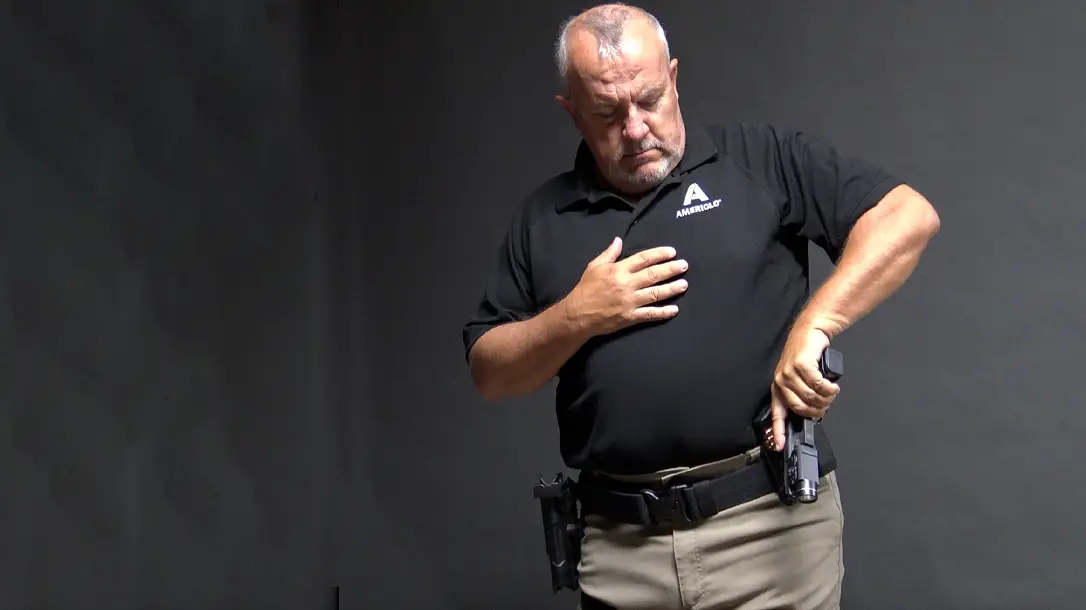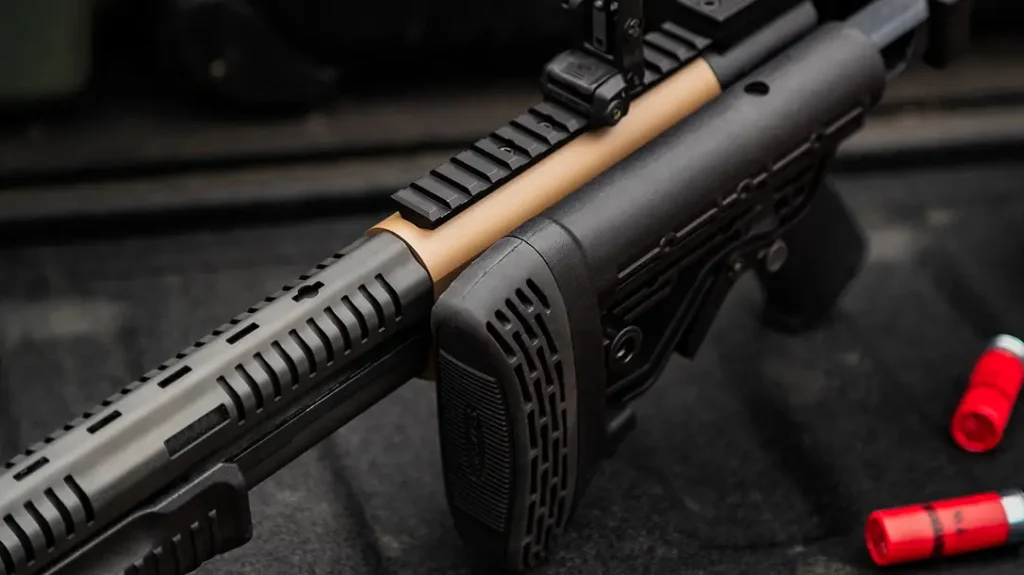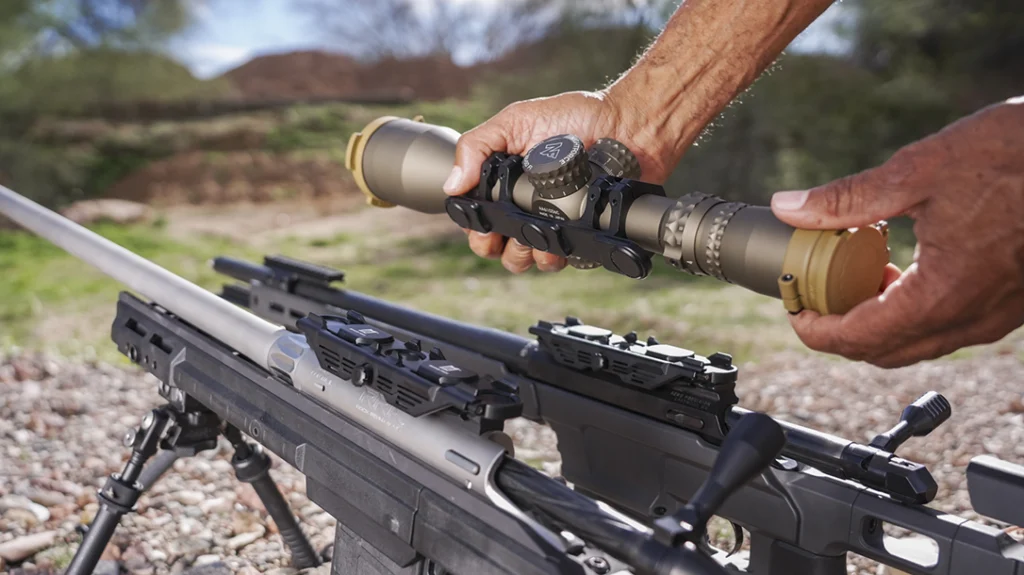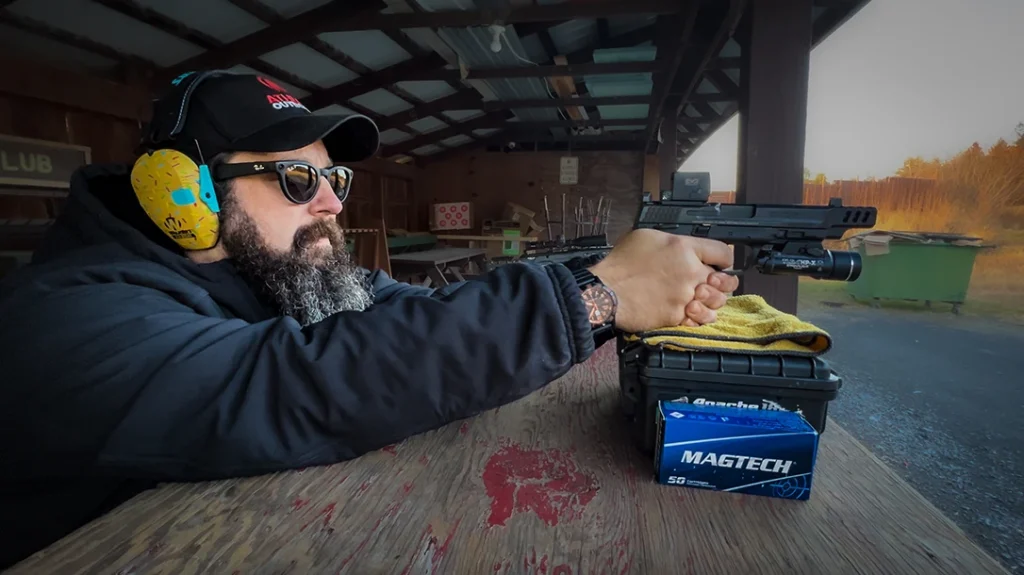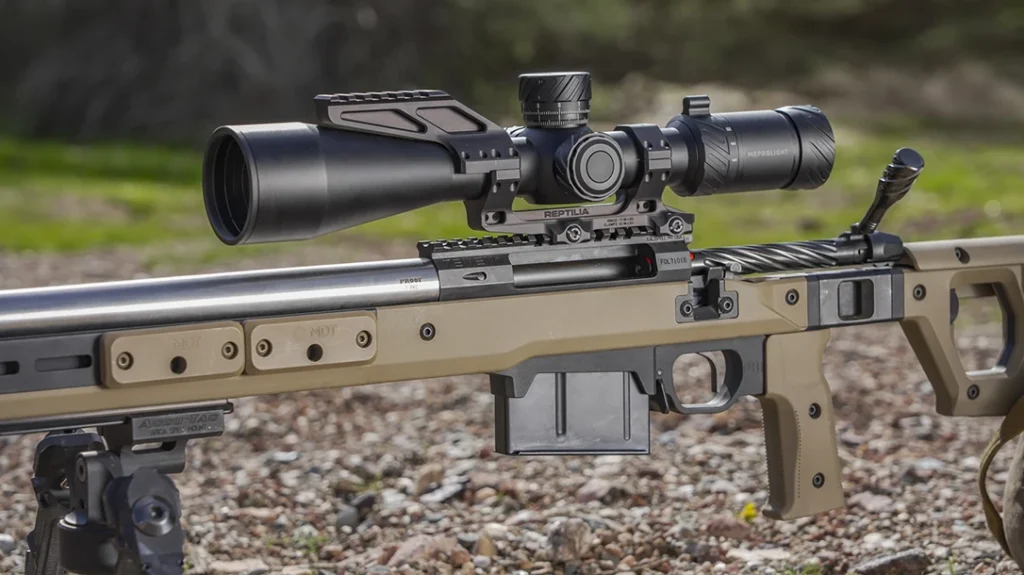Mastering our shooting skills comes in two distinct phases. First, we gain the fundamentals that allow us to hit our target consistently and accurately. Once that becomes second nature, we need to turn to application training. This is especially true for defensive handgun work. In short, we need to learn how to fight with our handguns. This means training in low light, around obstructions, and even with one hand at times.
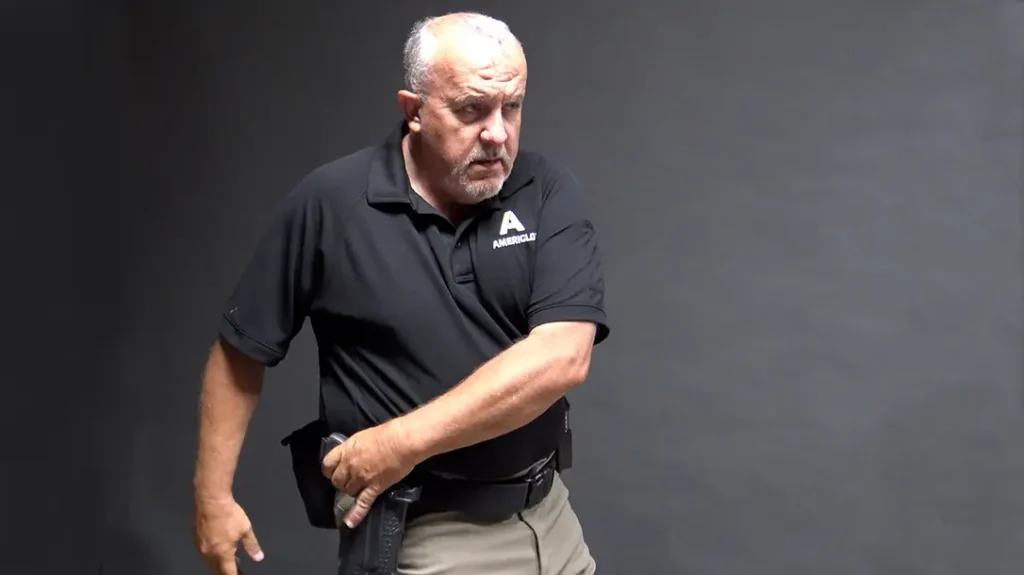
It is this last skill that can be most challenging. The reasons for doing this range from training to shoot with a potential injury or even if you are holding someone to protect them. Often called “weak side” shooting, this skill set focuses on the ability to fire and manipulate your gun when your dominant hand or arm is unavailable. This is a crucial skill because a failure to transition to your support side hand if injured, can have lethal consequences. While there are numerous specific components of support side shooting, we will examine some of the most important skills.
Advertisement — Continue Reading Below
One Handed – Drawing Your Handgun
You may have your strong side hand unavailable even before the gun is drawn. If this is the case, you will need to use your support side hand to get your gun out and into action. The position and location of your holster will drive a great deal of this, but the principles are the same. With that being said, though, it is always sound advice to test your holster position and make sure it fits all of your needs.
Reach with your support hand and index the gun. At this point, it will be “upside down.” Now, draw the gun in and pivot it in your hand. This can be helped by using your leg or other surface as a balance/press point. It is important to keep positive control of the gun and remain aware of your muzzle orientation. Once the gun is oriented correctly, you can acquire a firing grip and get to work.
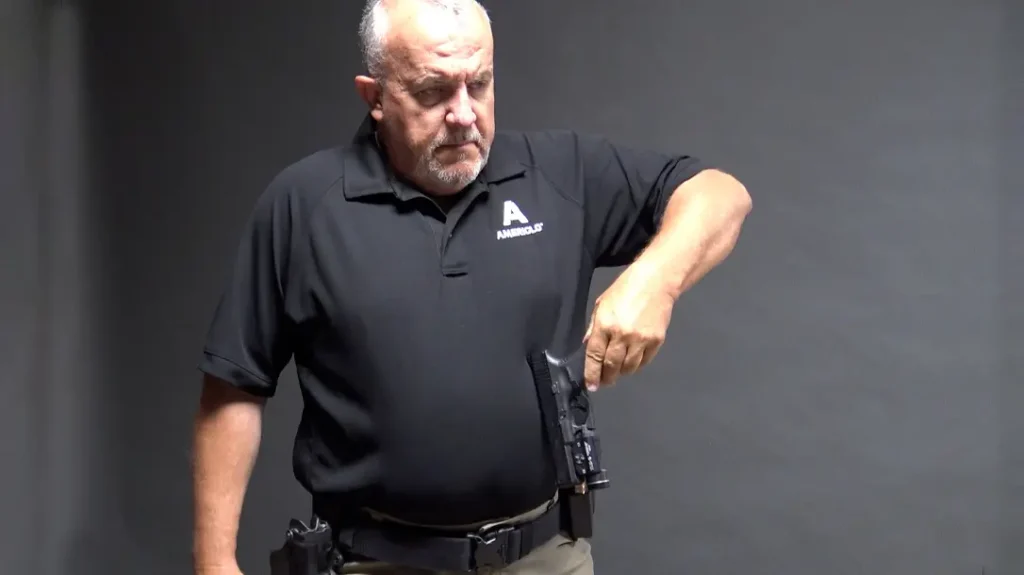
Advertisement — Continue Reading Below
Shooting One Handed
While it takes some practice, shooting with the support hand differs very little from shooting one-handed with your strong hand. A firm but not crushing grip coupled with a smooth, continuous trigger pull will result in accurate and repeatable shots. This will also minimize the movement of the gun in your hand. One specific area to focus on is a smooth press of the trigger directly to the rear. Take your time always to press the trigger smoothly and without a jerk.
Reloading the Gun
While it will hopefully not be needed, you must be able to reload if things press on. Like the draw, there is a process to work from. One method to execute a reload is as follows:
- Eject the empty magazine to the ground.
- Reholster the gun, accepting that it only fits in partially because it will be “backward,” index a fresh magazine and seat it into the mag well.
- Reacquire your grip on the gun.
- Draw it back out with a free finger.
- Press down the slide stop and let the action run forward.
You are now ready to re-enter the fight if need be.
Advertisement — Continue Reading Below
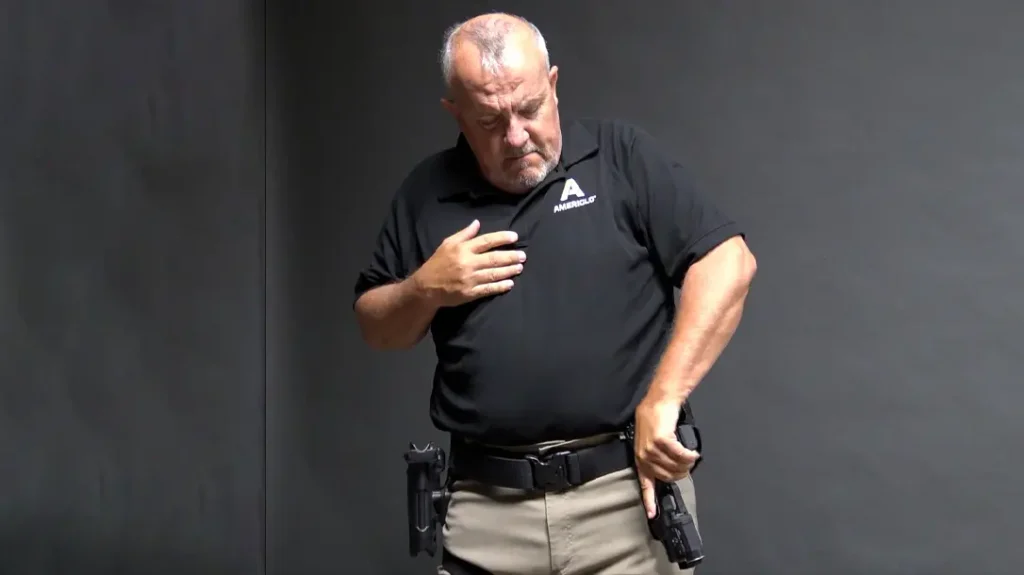
Malfunctions
One of the challenges people face when shooting one-handed is keeping sufficient support on the gun. This, in many cases, turns into malfunctions. The most common malfunction is a type two, or failure to eject. The gun moves slightly in your hands, and the slide does not get its regular motion. The standard remedy for this malfunction is described as “tap, rack, flip.” This can be done one-handed with practice.
The first step is to “tap.” This ensures the mag is seated correctly. One method is to use your knee as a surface to tap the mag on. The second is the “rack.” This is where caution and diligence are essential. Sloppy muzzle and trigger discipline can result in serious injury. You will need to find a firm surface to hook your rear sight on. One that is commonly used is the mag pouch or belt, but you can use any firm surface.
Advertisement — Continue Reading Below
Hook the sights and drive the gun down, thus racking the slide. The final step of “flip” is also incorporated at this point. As you rack the slide, flip the gun sharply, which will clear anything that may be sitting in the chamber. This technique should be practiced initially under professional supervision. Then, training should be done with an empty gun until you master the skill.
Get Training
While these are the fundamental basics of one-handed shooting, there is a great deal more to learn. We need to train to raise our skill level and be effective in a gunfight. Extensive training in one-handed practice can help you gain those skills. We enjoy shooting with two hands on our dominant side because we are good at it. The areas where we are challenged with accuracy and speed are where we need to focus the most. These are the skills that can ultimately determine the outcome of a lethal force encounter.
Advertisement — Continue Reading Below
For more information, visit: https://www.gunsite.com/
